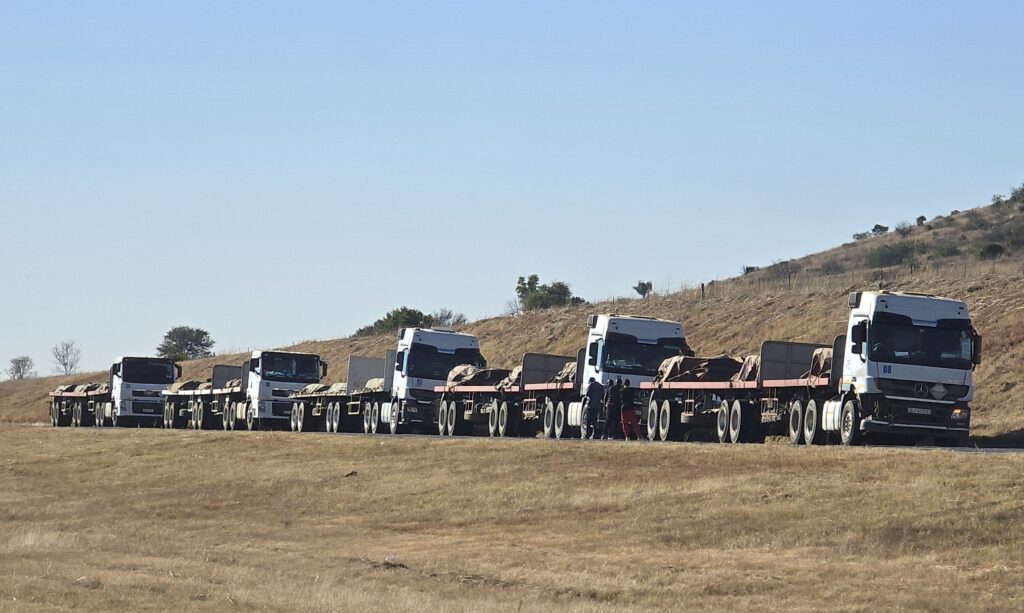A report on Logistics Crime in South Africa for the period August 21, 2025 to September, 2025 holds little good news. The report, compiled by Nationwide Risk Management, states that truck hijackings, cargo theft and infrastructure sabotage continue to disrupt the flow of goods and inflict significant economic damage. Here is the report….
1. Overview and key trends
Logistics crime, a persistent and costly issue in South Africa, continues to pose significant challenges to the economy and supply chain. While official, comprehensive statistics for the specific period of August 21st to September 21st, 2025 are not yet publicly available, a review of recent reports, news and official statements provides a clear picture of the ongoing threats and trends. The landscape of logistics crime during this period is characterized by:
Continued High Levels of Truck and Cargo Hijackings: Hijackings remain a primary method for criminals, with valuable goods being the main target. The surge in truck hijackings that was a trend in early 2025, according to a Bidvest Insurance report, appears to be a continued concern.
Targeting of Specific Commodities: Criminals are focusing on a range of high-value goods, including electronics, food and beverages, and metals. The valuable nature of these items and the relative ease of selling them on the black market make them attractive targets.
Infrastructure Sabotage and Theft: Beyond vehicle and cargo theft, criminal activities are also directly impacting the country’s logistics infrastructure. The theft of essential equipment, particularly copper cables from rail lines, continues to be a major cause of disruption and financial loss for state-owned entities like Transnet.
Sophisticated and Organized Nature of Crime: The incidents are not random. Reports from organizations like the Transport Asset Protection Association (TAPA) and Munich Re highlight the increasingly sophisticated and strategic nature of these crimes. This includes the use of deception, fraud and insider collusion, underscoring the role of organized crime syndicates.
2. Notable incidents and developments
Transnet Security Operations: A notable development was the successful arrest of 17 suspects in a two-day period (September 9-10) by Transnet security personnel and the South African Police Service (SAPS). The arrests were made in six separate incidents across different provinces, highlighting the widespread nature of the problem. Incidents included the attempted theft of a spare wheel from a train wagon in KwaZulu-Natal and the recovery of stolen copper cable in the North West province.
Rail Infrastructure Crime: The ongoing problem of cable theft continued to disrupt rail freight services. A derailment on the Durban corridor, which caused a 12% drop in container volumes, was a key incident during this period. While the line has since been recommissioned, this underscores the vulnerability of the rail network to criminal activity.
Cross-Border and Border Post Challenges: News updates indicate that border congestion and security issues remain significant challenges. While some improvements have been noted in median crossing times at some borders, incidents of crime and delays continue to be a persistent threat to the flow of goods.
3. Contextual analysis and contributing factors
The logistics crime situation in South Africa is not an isolated issue but is deeply embedded in broader socio-economic and security challenges. Reports from entities like Statistics South Africa (Stats SA) and the Democratic Alliance (DA) provide valuable context:
Worsening Crime Crisis: According to Stats SA’s “Victims of Crime” survey for the 2024/25 period, there is a general worsening of crime in the country, with significant increases in commercial crime and a low public perception of safety. This broader crime trend provides a fertile environment for logistics-specific crimes to flourish.
Economic Pressures: High inflation and a growing informal economy create conditions where consumers are more likely to seek cheaper, illicit goods. This, in turn, fuels the demand for stolen cargo and products.
Weak Enforcement and Corruption: A key finding in a 2025 report by the TRACIT organization is that illicit trade is enabled by corruption, weak regulatory enforcement and the presence of organized crime. This suggests that a lack of effective policing and intelligence is a major contributing factor.
Conclusion and outlook
From August 21st to September 21st, 2025, logistics crime in South Africa remained a major threat to the supply chain. While there were some successes in combating crime, such as the arrests made by Transnet and SAPS, the overall trend points to a persistent and evolving challenge. Truck hijackings, cargo theft and infrastructure sabotage continue to disrupt the flow of goods and inflict significant economic damage.
The root causes of these crimes, including organized crime, economic pressures and systemic weaknesses in law enforcement are complex and require a multi-faceted approach. Efforts to secure infrastructure and improve police-private sector collaboration are critical, but a long-term solution will require addressing the underlying issues that enable these criminal networks to operate.
Click on photograph to enlarge




